TechCrunch
TechCrunch
The app industry is as hot as ever, with a record 204 billion downloads and $120 billion in consumer spending in 2019. People are now spending three hours and 40 minutes per day using apps, rivaling TV. Apps aren’t just a way to pass idle hours — they’re a big business. In 2019, mobile-first companies had a combined $544 billion valuation, 6.5x higher than those without a mobile focus.
In this series, we help you keep up with the latest news from the world of apps, delivered on a weekly basis.
* This Week in Apps was previously available only to Extra Crunch subscribers. We’re now making these reports available to all TechCrunch readers.
Let’s dive in.
Headlines
Top Story: Apple doubles down on its right to take a 30% cut
Image Credits: TechCrunch
Ahead of Apple CEO Tim Cook’s testimony before Congress, Apple on Thursday again took to the press to fight back against claims of anti-competitive practices on its App Store.
Last month, the company detailed the results of a commissioned study that showed how Apple wasn’t receiving a cut of revenue on the majority of App Store transactions — $519 billion in commerce. This time, Apple is touting the results of another study by the same analyst group that is meant to demonstrate how Apple’s App Store commission rate is similar to those of other app stores and digital content marketplaces.
The study exhaustingly compares the App Store’s 30% commission to all other forms of storefronts, online and off. This includes other app stores, game stores, e-commerce marketplaces, digital platforms and even brick-and-mortar retail. Apple’s conclusion is that it’s not doing anything different from the others, so what’s the big deal?
Of course, this misses the point. The antitrust issues surrounding Apple’s App Store are not about whether Apple is charging more than other digital marketplaces. It’s about whether that commission structure is hindering competition, given Apple’s size, wealth and power.
As indie developer Brent Simmons (of NetNewsWire) put it this week, the cut limits developers’ ability to hire and retain talent.
To an app on the App Store it might mean being able to lower prices — or hire a designer or a couple junior developers. It might be the difference between abandoning an app and getting into a virtuous circle where the app thrives.
Quality costs money, and profitability is just simple arithmetic: anything that affects income — such as Apple’s cut — goes into that equation.
To put it in concrete terms: the difference between 30% and something reasonable like 10% would probably have meant some of my friends would still have their jobs at Omni, and Omni would have more resources to devote to making, testing, and supporting their apps.
Apple’s opening of ‘Find My’ to third-parties isn’t as nice as it seems
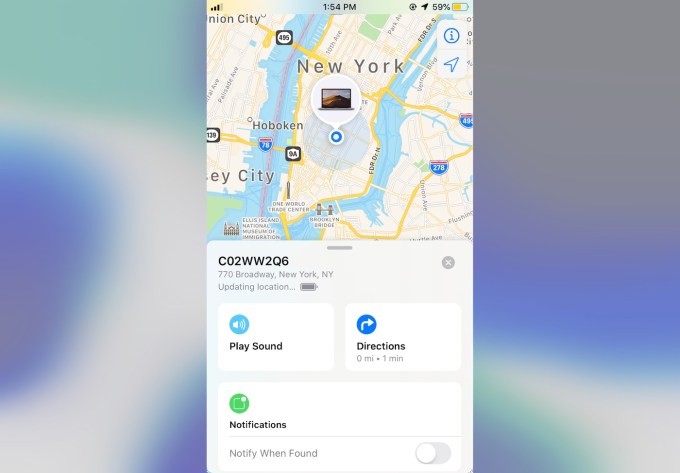
Image Credits: Apple
Apple announced at WWDC 2020 that third-party developers, like Tile, would be able to tap into Apple’s “Find My” technology platform to locate lost items and gadgets that aren’t made by Apple. The move was meant to counteract Tile’s ongoing complaints and testimony to U.S. antitrust investigators that Apple favored its first-party services at the expense of competitors’ businesses.
Tile was particularly concerned over Apple’s plans to announce a direct competitor, AirTags, which would be allowed to leverage the “Find My” technology at a deeper level. The move could potentially have wiped out Tile’s business with a better product — at least from a consumer standpoint.
The Washington Post reported this week that Apple’s opening of “Find My” is not the olive branch it seems, however. The publication acquired the 50-page confidentially agreement that all developers would have to sign, which indicates there are a lot of restrictions on how this integration works. For instance, Apple customers using “Find My” to locate a device will be barred from using competing services simultaneously, the document said. This is an unusual restriction — and one that makers of Bluetooth devices and smart home products don’t have to agree to for their own products.
Amazon turns Alexa into a mobile app launcher
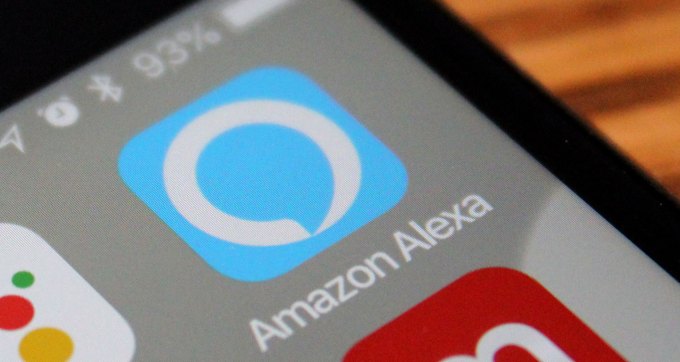
Image Credits: Bryce Durbin
How often do you think Amazon kicks itself over its smartphone failures? Given that the company hasn’t been able to compete directly on mobile, it’s finding another angle by way of Alexa. Amazon this week announced a bevy of new developer tools for its Alexa virtual assistant, including one that will allow the digital helper to launch iOS and Android apps using voice commands.
For example, you’d be able to say things like, “Alexa, start recording a TikTok,” or “Alexa, ask Twitter to search for #BLM.”
It’s unclear how many developers would adopt just a feature, outside of those that already offer one of the more popular Alexa skills. After all, Siri and Google Assistant can already launch and control your apps.
While Amazon is likely hoping that tying Alexa to the world of mobile apps could give it some momentum in terms of building an app ecosystem of its own, consumers so far have seemed to largely prefer using Alexa for first-party activities, like playing music, listening to news, controlling the smart home, asking random questions, making lists, setting reminders and more.
The move, however, may hint that Amazon is thinking about building out a mobile app ecosystem for its Alexa devices with a screen, like forthcoming versions of its Echo Show, for example.
Apple releases beta 3 builds of iOS 14, iPadOS 14
Testers this week received their third set of iOS 14 developer betas, as the software moves closer to its fall launch date. Beyond the usual bug fixes and performance improvements, only small changes were spotted this time around. This includes a new Music app icon, widget and the ability to share music to Snapchat; a new widget from the Clock app; a new pop-up when organizing the home screen that explains how to hide pages; a new pop-up when you use widgets for the first time; an updated design for Memoji masks; and more.
Facebook takes on Zoom with its latest Messenger Rooms update
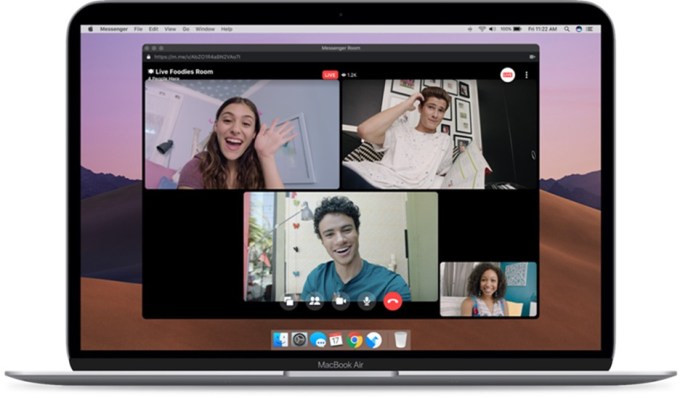
Image Credits: Facebook
Facebook this week announced a new feature that it hopes will give it a better shot at challenging Zoom’s dominance on web conferencing that came about due to the pandemic. The company upgraded its Messenger Rooms group calls platform to support the ability to live broadcast calls to platforms like Facebook, YouTube and Twitch — a move that effectively combined Facebook’s live-streaming capabilities with group video chat. Facebook turned around the feature in a relatively short time, given it has only been a matter of months since Zoom has really taken off. That indicates Facebook understands the threat of online chat and socializing exiting its platform.
The goal with the new addition is to make it simpler to broadcast to social platforms, to encourage users to return. Even if they arrive in order to broadcast to competitors’ sites, like YouTube, the company understands that adding Facebook to the list of destinations will increase the output of live broadcasts on its own platform.
In addition, Facebook also this week announced that Messenger now lets you secure your chats with Touch ID or Face ID on iOS. Why don’t more apps offer this feature?
TikTok unveils a $200M fund to back U.S. creators, as it scrambles for a “Plan B”
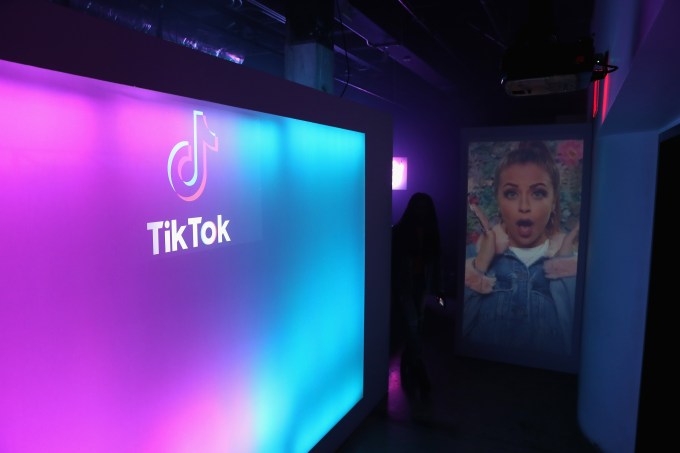
LOS ANGELES, CA – AUGUST 01: A general view of the atmosphere during the TikTok US launch celebration at NeueHouse Hollywood on August 1, 2018 in Los Angeles, California. (Photo by Joe Scarnici/Getty Images)
As the U.S. government weighs a ban on the Chinese-headquartered app over privacy concerns, the company announced plans to hire 10,000 employees across the U.S. over the next three years and launched a $200 million fund to invest in new creators. The new fund is aimed at helping top creators in the U.S. supplement their earnings, and potentially find the next big TikTok star in the process. The platform will begin accepting applications from U.S.-based creators starting next month and will then distribute the capital over the coming year.
Meanwhile, TikTok parent company ByteDance continues to discuss a range of other options to keep its popular and profitable app alive in the U.S. The latest, according to The Information, is one that would have a small group of the company’s U.S. investors joining forces to buy a majority stake in TikTok.
The U.S government — and particularly the Trump administration — continues to be skeptical about TikTok’s China ties. This week, the U.S. House voted to ban federal employees from using the app on government-issued devices. The vote passed 336-71, as part of a package of bipartisan amendments to the National Defense Authorization Act.
Robinhood ends plan for a U.K. launch
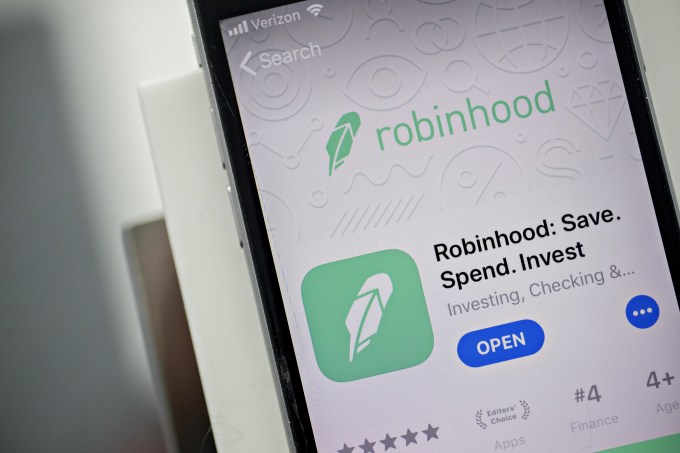
Image Credits: Andrew Harrer/Bloomberg via Getty Images
Mobile investing app Robinhood said this week it would not be launching in the U.K., as planned. The company said it was now going to hold off on its global expansion plans to instead focus its efforts in its home market, the U.S. The company had already received over 250,000 sign-ups on its U.K. waitlist, which it says will now be deleted in line with local privacy laws. The company said it will transfer 10 U.K. employees to the U.S., but others will be let go.
The app has been more recently facing criticism in the U.S. for how it lures in young, inexperienced traders who then buy and sell some of the riskiest financial products on the market — at rates higher than other retail brokerage firms. With its hip and youthful design and social app-like features, such as confetti and emoji, Robinhood can make investing feel more like a game, The NYT reported in a recent feature. But the reality is that these inexperienced users are taking more speculative risks, sometimes with devastating results. One Robinhood user killed himself after seeing his balance drop to negative $730,000 — a figure that was higher, in part, due to some of his incomplete trades.
Google has its own ‘Onavo’
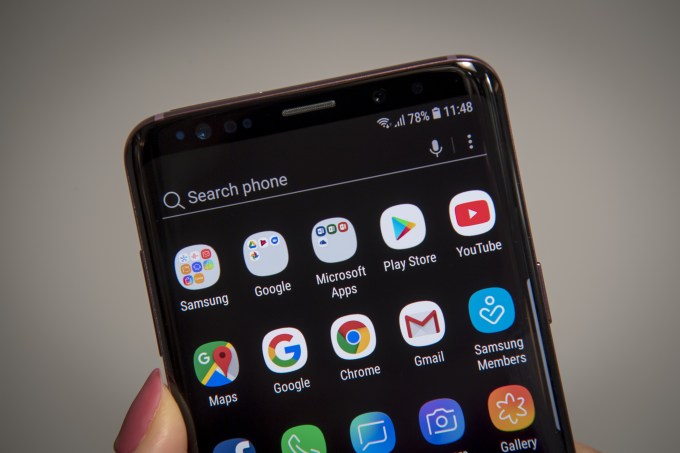
Image Credits: David Paul Morris/Bloomberg via Getty Images
Google today already allows Android app developers to collect usage data from devices where their app is installed, so it comes as no surprise that Google was doing this itself, too. The Information revealed Google’s program that allows it to access usage data on any device that has its Google apps pre-installed. Similar to Facebook’s Onavo, the data wasn’t just used to make improvements to Android, but was also used as a competitive advantage.
According to the report, Google had used the data to show how Google’s own services compared to rivals. This is what Facebook had used Onavo for, too — even leveraging those learnings to inform its acquisition strategy. APIs aren’t the only way large tech companies collect data on smartphone user habits. App intelligence firms like App Annie and Sensor Tower provide similar data to customers, obtained through a number of apps that downplay their true purpose, but really serve as data collection machines.
Data collection like this has been underway for years, but with the antitrust investigations now underway, the time may have come for regulators to actually do something about it.
Funding and M&A
- Fintech startup Meemo came out of stealth and launched its social finance app with $10 million in seed funding. Investors including Saama Capital, Greycroft, Monashees and Sierra Ventures led the round with additional participation from Amit Singhal, Hans Tung and several former colleagues from Google and Snap.
- Swiss keyboard startup Typewise raises $1 million seed round to build its “privacy-safe” next word prediction engine that works entirely offline. The round consists of $700,000 from more than a dozen local business angels; and $340,000 via the Swiss government through a mechanism akin to a research grant.
- China’s Missfresh raises $495 million for its e-grocery app with deep WeChat integrations. The round was led by state-backed China International Capital Corporation. Other investors included ICBC International Securities, Tencent, Abu Dhabi Capital Group, Tiger Global and a fund managed by the government of Changshu county, home to Missfresh’s east China headquarters
- Levitate raises $6 million for its “keep-in-touch” email marketing solution for small business that works across web and mobile. Investors include Tippet Venture Partners, Durham, North Carolina-based Bull City Venture Partners and angel investor Peter Gassner, the co-founder and CEO of Veeva Systems and investor in Zoom
Downloads
Dilims
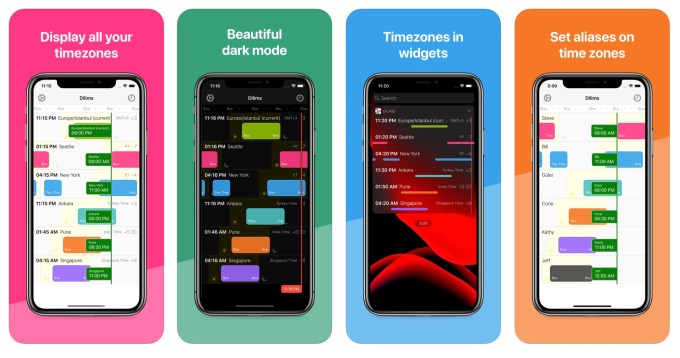
Image Credits: Dilims
This beautifully designed indie iOS app called Dilims lets you display different time zones on one screen, and even name them with aliases or view them as a widget. The simple single-purpose utility is useful for anyone who has to work with teams or clients across time zones, and wants an easier way to see what time it is and where. For $2, that’s kind of a steal, too.
Dark Noise 2
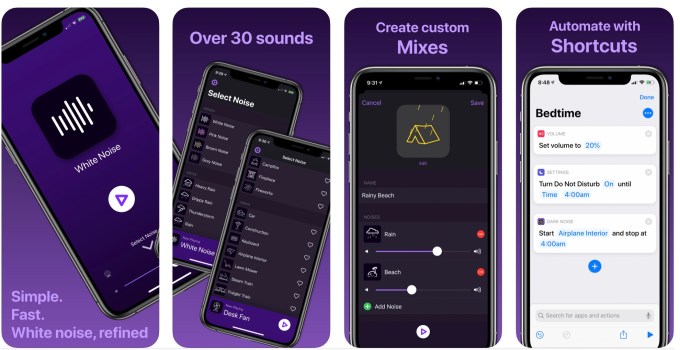
Image Credits: Dark Noise
If you like to play ambient noise to help you focus, sleep or just relax, you’ll want to check out Dark Noise 2. This ambient noise app for iOS just got a big update, which adds new sounds, new icons and introduces iCloud syncing. Plus, it now allows you to create your own custom mix of ambient sounds so you can chill to the sounds of rain at the beach, for example, or whatever else you want to blend. The app is $5.99 on the App Store.
Further Reading (and Listening)
- Apple Kills IDFA: How Will the Fallout Really Affect Marketers?: Dig into the implications of the IDFA changes in the latest episode of the Mobile Presence podcast, in a discussion with Shamanth Rao, veteran growth marketer and CEO of RocketShip HQ, a full-service mobile user acquisition agency.
- What Ever Happened to Digital Contact Tracing?: Lawfare takes a look at how the contact-tracing app landscape is shaping up, given the disappearance of contact tracing apps from the headlines. Though Apple and Google’s API was meant to encourage each country to build their own apps, the U.S. has instead taken a patchwork approach due to its fractured response to COVID-19. Today, there are a handful states with their own apps, and only some that plan to use Apple and Google’s technology. Many states have no plans for an app at all, turning instead to human-led contract tracing efforts.
- Designed for iPad: What makes a good iPad app today? These things, says LookUp Design in a thoughtful post.
Tweets of the Week
]]>
TechCrunch
TechCrunch
The app industry is as hot as ever, with a record 204 billion downloads and $120 billion in consumer spending in 2019. People are now spending three hours and 40 minutes per day using apps, rivaling TV. Apps aren’t just a way to pass idle hours — they’re a big business. In 2019, mobile-first companies had a combined $544 billion valuation, 6.5x higher than those without a mobile focus.
In this series, we help you keep up with the latest news from the world of apps, delivered on a weekly basis.
* This Week in Apps was previously available only to Extra Crunch subscribers. We’re now making these reports available to all TechCrunch readers.
Let’s dive in.
Headlines
Top Story: Apple doubles down on its right to take a 30% cut
Image Credits: TechCrunch
Ahead of Apple CEO Tim Cook’s testimony before Congress, Apple on Thursday again took to the press to fight back against claims of anti-competitive practices on its App Store.
Last month, the company detailed the results of a commissioned study that showed how Apple wasn’t receiving a cut of revenue on the majority of App Store transactions — $519 billion in commerce. This time, Apple is touting the results of another study by the same analyst group that is meant to demonstrate how Apple’s App Store commission rate is similar to those of other app stores and digital content marketplaces.
The study exhaustingly compares the App Store’s 30% commission to all other forms of storefronts, online and off. This includes other app stores, game stores, e-commerce marketplaces, digital platforms and even brick-and-mortar retail. Apple’s conclusion is that it’s not doing anything different from the others, so what’s the big deal?
Of course, this misses the point. The antitrust issues surrounding Apple’s App Store are not about whether Apple is charging more than other digital marketplaces. It’s about whether that commission structure is hindering competition, given Apple’s size, wealth and power.
As indie developer Brent Simmons (of NetNewsWire) put it this week, the cut limits developers’ ability to hire and retain talent.
To an app on the App Store it might mean being able to lower prices — or hire a designer or a couple junior developers. It might be the difference between abandoning an app and getting into a virtuous circle where the app thrives.
Quality costs money, and profitability is just simple arithmetic: anything that affects income — such as Apple’s cut — goes into that equation.
To put it in concrete terms: the difference between 30% and something reasonable like 10% would probably have meant some of my friends would still have their jobs at Omni, and Omni would have more resources to devote to making, testing, and supporting their apps.
Apple’s opening of ‘Find My’ to third-parties isn’t as nice as it seems

Image Credits: Apple
Apple announced at WWDC 2020 that third-party developers, like Tile, would be able to tap into Apple’s “Find My” technology platform to locate lost items and gadgets that aren’t made by Apple. The move was meant to counteract Tile’s ongoing complaints and testimony to U.S. antitrust investigators that Apple favored its first-party services at the expense of competitors’ businesses.
Tile was particularly concerned over Apple’s plans to announce a direct competitor, AirTags, which would be allowed to leverage the “Find My” technology at a deeper level. The move could potentially have wiped out Tile’s business with a better product — at least from a consumer standpoint.
The Washington Post reported this week that Apple’s opening of “Find My” is not the olive branch it seems, however. The publication acquired the 50-page confidentially agreement that all developers would have to sign, which indicates there are a lot of restrictions on how this integration works. For instance, Apple customers using “Find My” to locate a device will be barred from using competing services simultaneously, the document said. This is an unusual restriction — and one that makers of Bluetooth devices and smart home products don’t have to agree to for their own products.
Amazon turns Alexa into a mobile app launcher

Image Credits: Bryce Durbin
How often do you think Amazon kicks itself over its smartphone failures? Given that the company hasn’t been able to compete directly on mobile, it’s finding another angle by way of Alexa. Amazon this week announced a bevy of new developer tools for its Alexa virtual assistant, including one that will allow the digital helper to launch iOS and Android apps using voice commands.
For example, you’d be able to say things like, “Alexa, start recording a TikTok,” or “Alexa, ask Twitter to search for #BLM.”
It’s unclear how many developers would adopt just a feature, outside of those that already offer one of the more popular Alexa skills. After all, Siri and Google Assistant can already launch and control your apps.
While Amazon is likely hoping that tying Alexa to the world of mobile apps could give it some momentum in terms of building an app ecosystem of its own, consumers so far have seemed to largely prefer using Alexa for first-party activities, like playing music, listening to news, controlling the smart home, asking random questions, making lists, setting reminders and more.
The move, however, may hint that Amazon is thinking about building out a mobile app ecosystem for its Alexa devices with a screen, like forthcoming versions of its Echo Show, for example.
Apple releases beta 3 builds of iOS 14, iPadOS 14
Testers this week received their third set of iOS 14 developer betas, as the software moves closer to its fall launch date. Beyond the usual bug fixes and performance improvements, only small changes were spotted this time around. This includes a new Music app icon, widget and the ability to share music to Snapchat; a new widget from the Clock app; a new pop-up when organizing the home screen that explains how to hide pages; a new pop-up when you use widgets for the first time; an updated design for Memoji masks; and more.
Facebook takes on Zoom with its latest Messenger Rooms update

Image Credits: Facebook
Facebook this week announced a new feature that it hopes will give it a better shot at challenging Zoom’s dominance on web conferencing that came about due to the pandemic. The company upgraded its Messenger Rooms group calls platform to support the ability to live broadcast calls to platforms like Facebook, YouTube and Twitch — a move that effectively combined Facebook’s live-streaming capabilities with group video chat. Facebook turned around the feature in a relatively short time, given it has only been a matter of months since Zoom has really taken off. That indicates Facebook understands the threat of online chat and socializing exiting its platform.
The goal with the new addition is to make it simpler to broadcast to social platforms, to encourage users to return. Even if they arrive in order to broadcast to competitors’ sites, like YouTube, the company understands that adding Facebook to the list of destinations will increase the output of live broadcasts on its own platform.
In addition, Facebook also this week announced that Messenger now lets you secure your chats with Touch ID or Face ID on iOS. Why don’t more apps offer this feature?
TikTok unveils a $200M fund to back U.S. creators, as it scrambles for a “Plan B”

LOS ANGELES, CA – AUGUST 01: A general view of the atmosphere during the TikTok US launch celebration at NeueHouse Hollywood on August 1, 2018 in Los Angeles, California. (Photo by Joe Scarnici/Getty Images)
As the U.S. government weighs a ban on the Chinese-headquartered app over privacy concerns, the company announced plans to hire 10,000 employees across the U.S. over the next three years and launched a $200 million fund to invest in new creators. The new fund is aimed at helping top creators in the U.S. supplement their earnings, and potentially find the next big TikTok star in the process. The platform will begin accepting applications from U.S.-based creators starting next month and will then distribute the capital over the coming year.
Meanwhile, TikTok parent company ByteDance continues to discuss a range of other options to keep its popular and profitable app alive in the U.S. The latest, according to The Information, is one that would have a small group of the company’s U.S. investors joining forces to buy a majority stake in TikTok.
The U.S government — and particularly the Trump administration — continues to be skeptical about TikTok’s China ties. This week, the U.S. House voted to ban federal employees from using the app on government-issued devices. The vote passed 336-71, as part of a package of bipartisan amendments to the National Defense Authorization Act.
Robinhood ends plan for a U.K. launch

Image Credits: Andrew Harrer/Bloomberg via Getty Images
Mobile investing app Robinhood said this week it would not be launching in the U.K., as planned. The company said it was now going to hold off on its global expansion plans to instead focus its efforts in its home market, the U.S. The company had already received over 250,000 sign-ups on its U.K. waitlist, which it says will now be deleted in line with local privacy laws. The company said it will transfer 10 U.K. employees to the U.S., but others will be let go.
The app has been more recently facing criticism in the U.S. for how it lures in young, inexperienced traders who then buy and sell some of the riskiest financial products on the market — at rates higher than other retail brokerage firms. With its hip and youthful design and social app-like features, such as confetti and emoji, Robinhood can make investing feel more like a game, The NYT reported in a recent feature. But the reality is that these inexperienced users are taking more speculative risks, sometimes with devastating results. One Robinhood user killed himself after seeing his balance drop to negative $730,000 — a figure that was higher, in part, due to some of his incomplete trades.
Google has its own ‘Onavo’

Image Credits: David Paul Morris/Bloomberg via Getty Images
Google today already allows Android app developers to collect usage data from devices where their app is installed, so it comes as no surprise that Google was doing this itself, too. The Information revealed Google’s program that allows it to access usage data on any device that has its Google apps pre-installed. Similar to Facebook’s Onavo, the data wasn’t just used to make improvements to Android, but was also used as a competitive advantage.
According to the report, Google had used the data to show how Google’s own services compared to rivals. This is what Facebook had used Onavo for, too — even leveraging those learnings to inform its acquisition strategy. APIs aren’t the only way large tech companies collect data on smartphone user habits. App intelligence firms like App Annie and Sensor Tower provide similar data to customers, obtained through a number of apps that downplay their true purpose, but really serve as data collection machines.
Data collection like this has been underway for years, but with the antitrust investigations now underway, the time may have come for regulators to actually do something about it.
Funding and M&A
- Fintech startup Meemo came out of stealth and launched its social finance app with $10 million in seed funding. Investors including Saama Capital, Greycroft, Monashees and Sierra Ventures led the round with additional participation from Amit Singhal, Hans Tung and several former colleagues from Google and Snap.
- Swiss keyboard startup Typewise raises $1 million seed round to build its “privacy-safe” next word prediction engine that works entirely offline. The round consists of $700,000 from more than a dozen local business angels; and $340,000 via the Swiss government through a mechanism akin to a research grant.
- China’s Missfresh raises $495 million for its e-grocery app with deep WeChat integrations. The round was led by state-backed China International Capital Corporation. Other investors included ICBC International Securities, Tencent, Abu Dhabi Capital Group, Tiger Global and a fund managed by the government of Changshu county, home to Missfresh’s east China headquarters
- Levitate raises $6 million for its “keep-in-touch” email marketing solution for small business that works across web and mobile. Investors include Tippet Venture Partners, Durham, North Carolina-based Bull City Venture Partners and angel investor Peter Gassner, the co-founder and CEO of Veeva Systems and investor in Zoom
Downloads
Dilims

Image Credits: Dilims
This beautifully designed indie iOS app called Dilims lets you display different time zones on one screen, and even name them with aliases or view them as a widget. The simple single-purpose utility is useful for anyone who has to work with teams or clients across time zones, and wants an easier way to see what time it is and where. For $2, that’s kind of a steal, too.
Dark Noise 2

Image Credits: Dark Noise
If you like to play ambient noise to help you focus, sleep or just relax, you’ll want to check out Dark Noise 2. This ambient noise app for iOS just got a big update, which adds new sounds, new icons and introduces iCloud syncing. Plus, it now allows you to create your own custom mix of ambient sounds so you can chill to the sounds of rain at the beach, for example, or whatever else you want to blend. The app is $5.99 on the App Store.
Further Reading (and Listening)
- Apple Kills IDFA: How Will the Fallout Really Affect Marketers?: Dig into the implications of the IDFA changes in the latest episode of the Mobile Presence podcast, in a discussion with Shamanth Rao, veteran growth marketer and CEO of RocketShip HQ, a full-service mobile user acquisition agency.
- What Ever Happened to Digital Contact Tracing?: Lawfare takes a look at how the contact-tracing app landscape is shaping up, given the disappearance of contact tracing apps from the headlines. Though Apple and Google’s API was meant to encourage each country to build their own apps, the U.S. has instead taken a patchwork approach due to its fractured response to COVID-19. Today, there are a handful states with their own apps, and only some that plan to use Apple and Google’s technology. Many states have no plans for an app at all, turning instead to human-led contract tracing efforts.
- Designed for iPad: What makes a good iPad app today? These things, says LookUp Design in a thoughtful post.
Tweets of the Week
]]>
TechCrunch
TechCrunch
The data shows the NPO grew ad revenue after ditching trackers to target ads in the first half of this year — and did so despite the coronavirus pandemic landing in March and dealing a heavy blow to digital advertising globally (contributing, for example, to Twitter reporting Q2 ad revenues down nearly a quarter).
The context here is that in January the broadcaster switched to serving contextual ads across its various websites, where it has an online video audience of 7.1 million per month, and display reach of 5.8 million per month.
Brave has just published an analysis of six months’ worth of data which shows NPO’s ad revenue increased every month over this period. Year-over-year increases after the broadcaster unplugged the usual morass of background adtech that makes surveillance capitalism ‘function’ are as follows:
- January: 62%; February 79%; March 27%; April 9%; May 17%; June 17%;
Earlier this month Brave published five months’ worth of the NPO ad revenue data. So this is actually an update on an earlier blog post on the topic. The updated figures from Ster, the NPO’s ad sales house, slightly amend the earlier amounts, revising the reported figures further upwards. So, in short, non-tracking ad revenue bump has been sustained for half a year. Even amid a pandemic.
Now the idea that switching from behavioral to contextual targeting can lead to revenue growth is not a narrative you’ll hear from the ad tracking industry and its big tech backers. Aka the platform giants whose grip on the Internet’s attention economy and the digital infrastructure used for buying and selling targeted ads has helped them to huge profits over the past half decade or so (even as publisher revenues have largely stagnated or declined during this boom period for digital ad spending).
The adtech industry prefers to chainlink tracking and targeting to ad revenue — claiming publisher revenues would tank if content producers were forced to abandon their reader surveillance systems. (Here’s Google’s VP of ad platforms, last year, telling AdExchanger that the impact of tracker blocking on publishers’ programmatic ad revenues could cut CPMs in half, for example.)
Yet it’s not the first time there’s been a report of (surprise!) publisher uplift after ditching ad trackers.
Last year Digiday reported that the New York Times saw its ad revenue rise in Europe after it switched off creepy ads ahead of a major regional regulatory update, shifting over to contextual and geographical targeting.
The NYT does have a certain level of brand cache which not every publisher can claim. Hence the tracking industry counterclaims that its experience isn’t one that can be widely replicated by publishers. So the NPO data is additionally interesting in that it shows revenue uplift for a public broadcaster even across websites that aren’t dominant in their particular category, per Brave’s analysis.
Here’s its chief policy & industry relations officer, Dr Johnny Ryan, who writes:
NPO and its sales house, Ster, invested in contextual targeting and testing, and produced vast sales increases even with sites that do not appear to dominate their categories. This may be a tribute to Ster’s ability to sell inventory across NPO’s media group as a collective, but this benefit would have applied in 2019 and does not account for the revenue jump in 2020. A publisher does not therefore need to have market dominance to abandon 3rd party tracking and reproduce NPO’s vast revenue increase.
And here’s Ryan’s take on why “legitimate” (i.e. non junk/clickbait) publishers of all sizes should be able to follow the NPO’s example:
Although it is a national broadcast group, NPO websites do not dominate the web traffic rankings in the Netherlands. Only one of NPO’s properties (Nos.nl) ranks in the top 5 in its category in the Netherlands, according to Similar Web. None of the other NPO properties are in the Netherland’s top 100. The other NPO websites for which Similar Web provides a traffic rank estimation (versus other websites in the Netherlands) range from 180th to 5,040th most popular in the Netherlands. NPO properties’ popularity or market position in each content category are not correlated with increases in impressions sold. Country site rank, category site rank, and numbers of page views, vary widely between the properties, whereas the increases in impression sold are all above 83%, with one explicable exception [due to technical difficulties over the tracked period which prevented ads being served against one of its most popular programs].
Brave has its own commercial iron in the fire here, of course, given its approach to monetizing user eyeballs aligns with an anti-tracking marketplace ethos. But that hardly takes away from the NPO’s experience of — surprise! — revenue growth from ditching creepy ads.
Joost Negenman, NPO’s privacy officer, told TechCrunch they had certainly not expected to see ad revenue uplift from making the switch. The decision to move to contextual ads was made mid last year, as a result of the public broadcaster becoming “convinced” the programmatic targeting ad system it was using wasn’t compatible with its “public task”, as he tells it.
“We expected a rather dramatic drop in revenue,” says Negenman, noting that at that time the NPO was only getting a consent rate from users of around 10% for the ad cookies Ster needed for its programmatic ad system — down from 75%+ prior to GDPR (“probably” because its Cookie Consent Module at the time had been based on “implicit instead of explicit consent”; whereas GDPR mandates for consent to be legally valid it must be specific, informed and freely given).
“We also expected a drop because advertisers could completely ignore us when NPO and Ster turned away from this market adtech standard together, at a time when there was no sophisticated alternative in place,” he continues. “This fortunate misjudgment on our side was also fuelled by the strong belief (and preaches) in programmatic ad-solutions by online marketeers and companies.”
Negenman attributes the surprise revenue bounty from selling contextual ads to a couple of factors: Namely the “A-brand” pull of NPO and its affiliate broadcasters, meaning advertisers still wanted to be able to reach their users. And, well, to having the pro-privacy zeitgeist on its side.
“We’re all aware of the growing scrutiny on the adtech business, no explanation needed!” he says.
It’s worth noting the NPO’s switch to contextual ads did require some investment to pull off. The publisher shelled out for technology to enable contextual targeting across its web properties — such as building out descriptive metadata to enable more granular contextual targeting on video content. And the level of investment required to achieve similarly sophisticated contextual ad targeting might not be available to every publisher.
Yet the sustained revenue bump NPO experienced post-switch means it very quickly earned back what it spent — so for publishers that can afford to invest up front in transitioning away from tracking it looks like a very compelling case study.
“It paid for itself within a month or so!” confirms Negenman. “Considering all the money Ster didn’t have to share with Google and other in-betweens. From 1 advertisement Euro, 1 Euro goes to Ster!”
Though he also notes the broadcaster was helped by Dutch law placing an obligation on it to have subtitles for over 90% of its assets — meaning some of the leg work to build out contextual targeting had already been done.
“Subtitles data of course provides valuable descriptive metadata. So those tools where already in place,” he says. “But beside subtitles — that are nowadays easier to automate — standard program information like (sub)genre, titles of actors are of great value as well to add context on a video asset.”
Brave’s Ryan posits that the role of NPO’s sales house is also important to its success with contextual ads. “Smaller publishers may benefit from engaging with reputable sales houses that can aggregate supply as Ster does for NPO’s various properties,” he suggests. “Publishers of all sizes will benefit according to their reputations — unless advertisers and agencies purchase from sales houses with poor reputations.”
Asked whether he believes the switch would work for all publishers, Negenman does not go that far. “For all A-brands I definitely see this approach working, also news outlets have the perfect (meta)data needed to feed such a system,” he says, arguing there’s a place in the market for both contextual and targeted ads.
“Not all online advertising is the same,” he argues. “A shoe annoyingly following you online is something other than creating (A-)brand awareness. Perhaps the contextual system can start by creating privacy friendly ‘lagoons’ where a person is not tracked or followed by a shoe. There the system gets time to prove its worth in revenue and respect for its audience.”
“For other public broadcasters I believe they have more or less an (moral) obligation to at least start testing contextual ads,” he adds. “The adtech system’s use of personal and behavioral data has become so un-explainable that the GDPR information obligation is almost impossible to meet.”
As we’ve said before, the evidence of viable alternatives to privacy-torching surveillance capitalism is stacking up — even as harms linked to adtech platforms’ exploitation of people’s information keep piling up.
And while contextual ads may not sum to a revenue boom for every type of publisher, the notion that it’s tracking or nothing is clearly bogus.
(You could also make a pretty compelling case that abusive exploitation of people’s data that sustains low grade publishing is not at all a net societal good and so supporting a system that supports bottom feeding clickbait (and massive levels of ad fraud) is simply bad for everyone — well, other than the bottom feeders… )
Ryan goes so far as to call conventional adtech “a cancer eating at the heart of legitimate publishers”. And having worked inside the beast he’s castigating, via an earlier stint at anti-ad-blocking adtech company called PageFair, his critique is all the more hard hitting.
He’s used his insider knowledge to file a number of complaints with European regulators — most notably against the real-time bidding (RTB) practice programmatic advertising can rely on, drawing in vast quantities of Internet users’ personal information and scattershotting it back out again.
He contends this high velocity trading of personal data can’t possibly be compliant with Europe’s data protection framework — which, conversely, mandates that people’s information be securely handled, not spread around like confetti. (Though he believes RTB can work fine if you strip out personal data and only use it for contextual ads.)
European data protection regulators agree there’s a ‘lawfulness’ problem with current adtech practices. But have so far sat on their hands rather than taking enforcement action, given how widespread the problem is.
(Interestingly, Negenman says the NPO investigated continuing using programmatic RTB but with personal data stripped out. Though, in the event, he says this idea never got past the production stage. “Personally I can imagine a compliant combination,” he notes, adding: “Most importantly, the personal data must not leave the trusted data partner [and be shared with] the advertisers.”)
Turning a tanker clearly takes time. But the more publishers that see not pushing creepy ads on their users as an opportunity to experiment with alternatives, the more chance there will be for the market to shift wholesale for privacy — a shift that can be a huge win for publishers and users alike, as the NPO experience illustrates.
Competition regulators, meanwhile, are closing in on big (ad)tech’s market power — and the conflicts of interest that arise from the “vertically integrated chain of intermediaries” which work to funnel the lion’s share of digital ad spend into platform coffers. So it’s not hard to conceive of an intervention to force market reform by breaking up Google’s business empire — to separate the ‘ad’ bits from its other ‘tech’.
The self-interested forces that underpin surveillance capitalism made their fortunes when no one was really looking at how their methods exploit people’s data. Now, with many more eyes trained on them, they are operating on borrowed time. It’s no longer a question of whether change is coming. The sands are shifting, with platforms themselves now moving to limit access to third party tracking cookies.
Savvy publishers would do well to get out ahead of the next round of platform power moves — and skate to where the puck’s headed.
]]>
TechCrunch
TechCrunch
The 4.1 million figure represents those who have activated their accounts out of the total 26.5 million subscribers who have been given access to HBO Max. Of these 26.5 million, 23.5 million are wholesale (MPVDs), and 3 million are retail (direct to consumer.) However, the 4.1 million doesn’t include the entire 3 million subscriber base. *
WarnerMedia also clarified that there are 1 million wholesale subscribers using HBO Max via one of AT&T’s wireless plans or via AT&T’s broadband and pay TV service where it’s bundled.
Though it’s still early days for HBO Max, these numbers indicate that the vast majority of traditional HBO customers have not yet tried HBO Max, even though it’s free for them to use. Currently, HBO customers can authenticate with HBO Max using their cable or satellite TV provider account information. HBO Now subscribers, meanwhile, are automatically upgraded to Max across Hulu, mobile apps, select ISPs, and the HBO Now site.
The HBO strategy, from a consumer perspective, has been confusing. HBO is known as premium channel with mostly adult content. This chanel had been distributed across mobile devices as HBO GO for traditional pay TV customers and HBO Now for over-the-top users. With the launch of HBO Max, the goal has been to transform HBO into a broader offering for the whole family, similar to Netflix . To do so, HBO, WarnerMedia and other licensed content was combined under one roof.
AT&T said today that HBO Max customers spent, on average, 70% more time viewing the service on a weekly basis, compared with HBO Now. It also stressed the popularity of its original content, noting that all 6 of its new originals found themselves ranked among the top 25 viewed series on the platform. By August, HBO Max will have 21 new original series on the platform.
But WarnerMedia still wants to distribute “standard” HBO to its larger, existing customer base, and has a number of deals in place to do so across a variety of streaming TV services, like Hulu, and platforms, like Apple TV, in addition to numerous pay TV providers. In addition, HBO is sold as an add-on premium subscription across some platforms, like Amazon and Roku.
That makes it difficult for consumers to understand which version of HBO they can get and where it will work.
That significant challenge is made worse by the fact that WarnerMedia has not yet been able to ink deals for HBO Max with the two top streaming media platform providers in the U.S.: Amazon and Roku, which control 70% of the market. That means consumers who have heard of the new service won’t be able to find the app on these devices.
Stankey addressed this problem today when speaking to investors.
“We’ve tried repeatedly to make HBO Max available to all customers using Amazon Fire devices, including those customers that have purchased HBO via Amazon,” he said. “Unfortunately, Amazon has taken an approach of treating HBO Max and its customers differently than how they’ve chosen to treat other services, and their customers.”
The comments, which notably skip over any mention of Roku, come only days before Amazon CEO Jeff Bezos is set to testify before the House Judiciary Antitrust Subcommittee, along with CEOs from Apple, Google and Facebook, as part of the Committee’s ongoing investigation of potential anti-competitive practices in the digital marketplace.
One area of concern for the Committee is the power and control the tech companies have over their digital marketplaces, where they set terms, ban apps and services from distribution, and take commissions from businesses that compete with their own.
AT&T’s issue with Amazon, in this case, has to do with how it wants to distribute HBO Max across the media platforms. With its shift in strategy, AT&T aims to offer consumers a standalone app, similar to Netflix — as it does now on Apple TV and Android TV. But Amazon and Roku want to also sell subscriptions to HBO Max like they currently do for HBO through the Amazon Prime Video Channels platform and Roku’s Premium Subscription platform on The Roku Channel.
With Roku’s investment in The Roku Channel it’s been distancing itself from being the neutral platform it once was, as it’s now motivated to make deals that benefit its own goals around The Roku Channel’s subscription marketplace, the same as other non-neutral players, like Amazon. This is not a problem unique to HBO Max, either. NBCU’s new streaming service Peacock also failed to offer Roku and Fire TV support at launch, for similar reasons. Unfortunately, the consumer is the one who ultimately loses here as tech giants grapple over not only the dollars, but who will own the customer relationship in the long run.
Without distribution, AT&T’s WarnerMedia could be challenged to meet its goals for HBO Max.
The company, however, claims it’s still on track for 50-55 million HBO Max subscribers in the U.S by 2025. As part of this strategy, WarnerMedia also plans to launch HBO Max internationally and offer a lower-cost, as-supported version of the service sometime next year.
* Correction, 7/23/20: Due to the way the subscriber numbers were discussed on earnings, there were some nuance missed in terms of the breakdown. We’ve corrected this to be more accurate.
]]>


